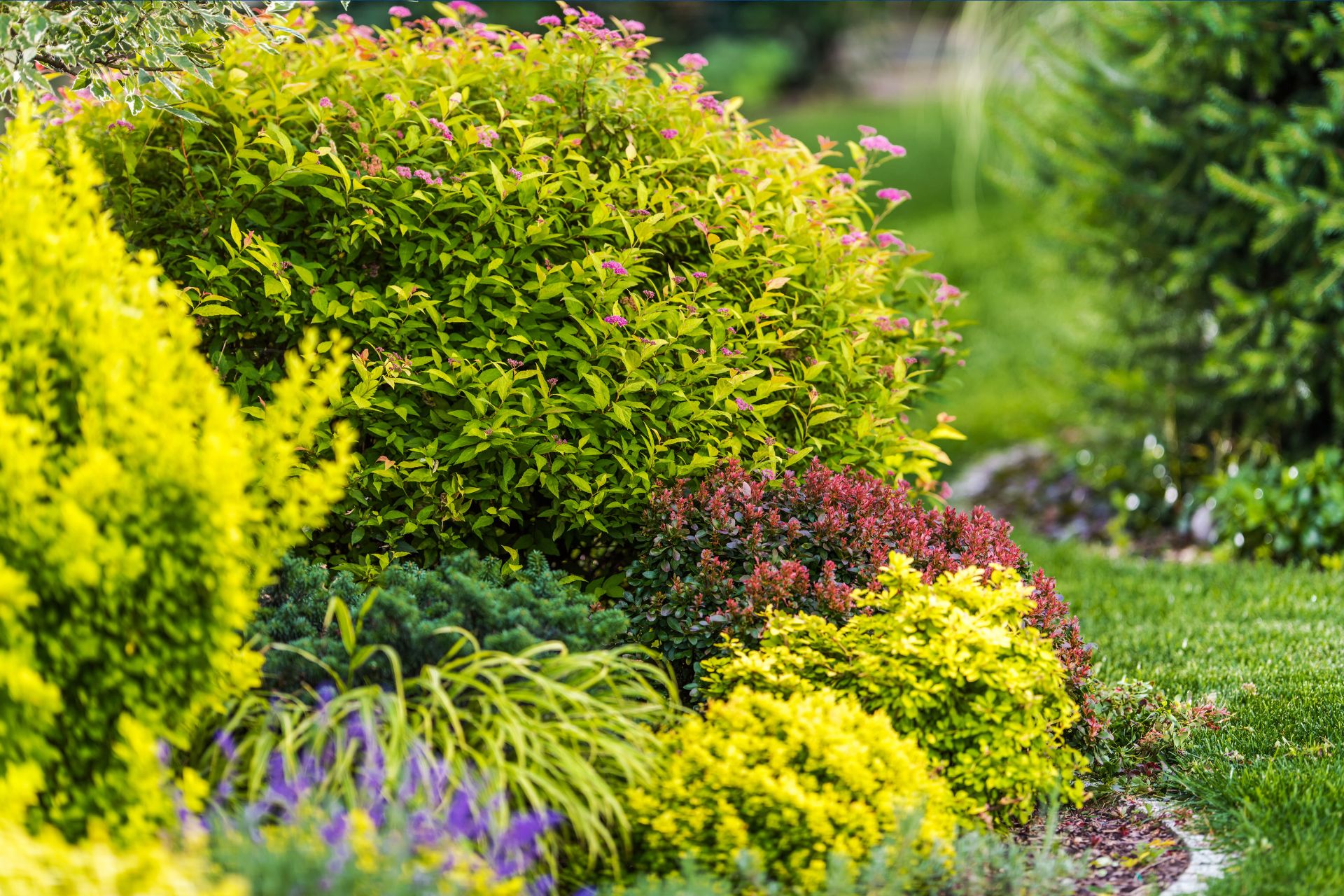Growing a garden in extremely dry weather is hard work. Not all plants can survive in arid climates, so you might find your garden wilting and dying off much quicker than necessary.
Luckily, drought-tolerant shrubs are the perfect solution. They look fantastic, tolerate heat well, and require very little maintenance to thrive.
Whether you’re looking for flowering or non-flowering, evergreen or deciduous, there are some great drought-tolerant shrubs for you to choose from.
But where do you start? We’ve created this quick guide to show you our favorite xeriscape shrubs that can survive in almost any garden. We’ve also included our top tips for shrub maintenance and planting to help you get started.
Table of Contents
At a Glance: Popular Drought Tolerant Shrubs
Some of the most drought-tolerant shrubs include lavender, Russian sage, glossy abelia, beauty bush, barberry, and burning bush. Leatherleaf viburnum and lantana are also drought-tolerant shrubs that do extremely well in xeriscapes. Almost all drought-tolerant shrubs are well-adapted to arid conditions and can survive prolonged dry spells with little water, making them perfect for hot, dry conditions.
Characteristics of Drought-Tolerant Shrubs
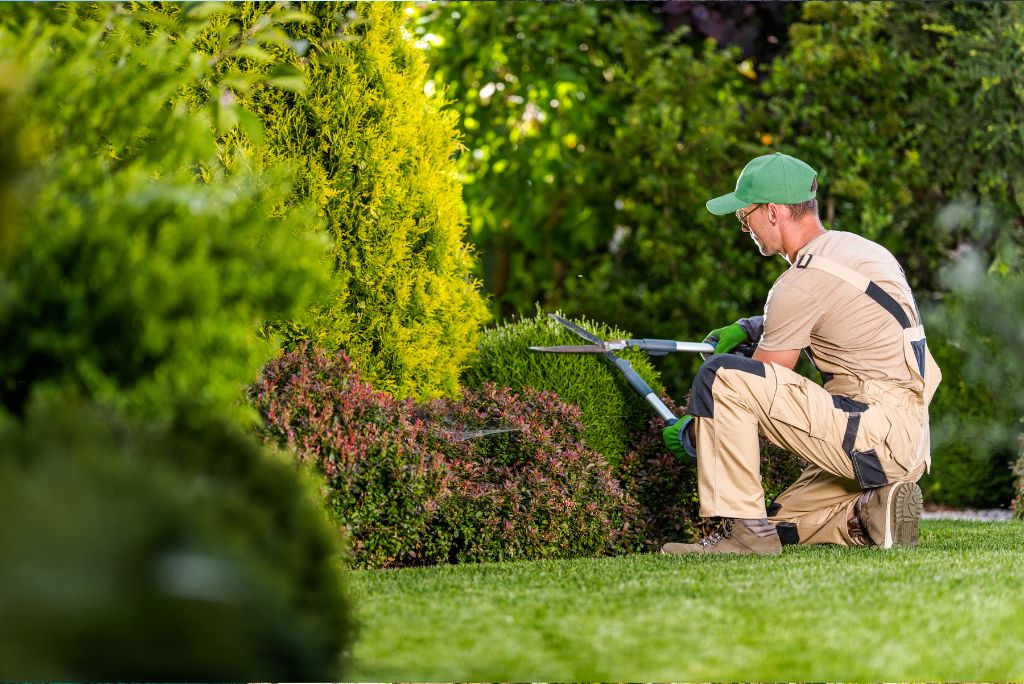
There are hundreds of shrubs that will do well in drought-prone areas, so if you’re feeling a little overwhelmed by the choices, here are three key characteristics to look for.
Low Water Use
Take a look at the care card on any new shrub you buy, and make sure it says it’s low water use. This means it can survive for longer stretches without water. In a drought, all plants need to be watered to survive, but low-water plants will help you drastically reduce the amount you use, helping with water conservation efforts.
Efficient water storage
Plants with thick, waxy leaves store water more efficiently than other types. When you’re on the hunt for new shrubs, see if they have waxy leaves – these help reflect light and reduce water loss.
Heat tolerance
Shrubs that love full sun do best in drought conditions. On the care label, see if the shrub you’ve chosen prefers full sun or partial shade. If you do have some shady areas in your garden, this might not be a concern.
However, shrubs that enjoy full sun are the best at tolerating heat, so they have less chance of scorching in extremely hot weather.
Examples of Drought-Tolerant Shrubs
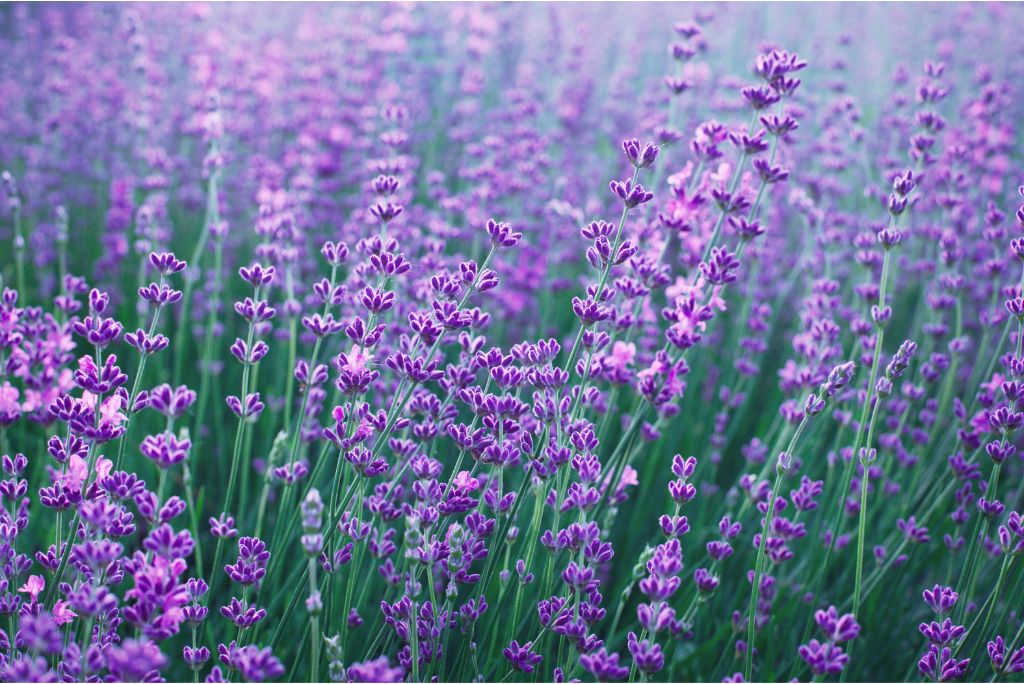
Try to find plants that are native to your area first. These tend to thrive best and are already adapted to your specific climate. But here are five popular drought-tolerant shrubs to add to your xeriscape if you’re struggling to find a native plant that suits your needs.
Lavender
Lavender has a deep root system that lets it soak up groundwater from deep beneath dry soil. Because of this, they can withstand drought much better than other species.
This shrub also has small, narrow leaves with a dense covering of fine hairs. These also help reduce water loss, allowing the plant to conserve moisture and thrive in arid climates.
Although lavender is considered a drought-tolerant plant, it will still need regular water during its establishment phase. Once it’s grown, it’ll only need infrequent water to thrive.
Beauty Bush
The K. amabilis is a dense, deciduous shrub that grows to about three meters in height. It has flaking bark, pretty oval leaves, and soft pink flowers with yellow throats that bloom in the late spring.
This drought-resistant plant thrives in well drained soil and full sunlight and is excellent at withstanding droughts. The best part about the beauty bush is how easy it is to grow it. It needs very little care to thrive, and the long, arching branches make a perfect backdrop to a xeriscape.
Leatherleaf Viburnum
This one is an evergreen shrub with broad, green leaves. The white flowers bloom throughout the late summer, and in the autumn, red berries arrive. Although this plant is native to Western China, birds native to America tend to love their berries, so you’ll find plenty of birds visiting this bush shrub.
The leatherleaf viburnum grows to around ten feet tall and wide, making it perfect for borders and privacy. It’s winter hardy in USDA zones 5-8 and easily withstands droughts with infrequent watering.
Barberry
With vibrant foliage in shades of yellow, green, and burgundy, the barberry is a popular drought-resistant shrub for xeriscaping. They don’t have showy blooms, but the beautiful colors come through year-round – just watch out for the thorns!
Some types of barberry get quite large and need regular pruning, so make sure to check the maximum size when you’re looking at varieties at a local nursery. If you live in an area with wild deer, these are often used as a living wall thanks to the thorns and thick growth.
Fall is the best time to plant barberry shrubs since the roots will have time to develop before early spring. It prefers full sun or partial shade and will do well even in high temperatures.
Burning Bush
Last but not least is the Euonymus alatus, or “burning bush”. It’s one of the most colorful shrubs you can get with fire-red leaves (hence the name). In the summer, it has beautiful shades of green, but it’s the fall when the beautiful colors really shine.
These are extremely hardy shrubs that require no maintenance. They grow fast and tolerate drought well, so they’re perfect for low-maintenance xeriscapes. Plant them in full sun or partial shade for the best results.
Benefits of Drought-Tolerant Shrubs
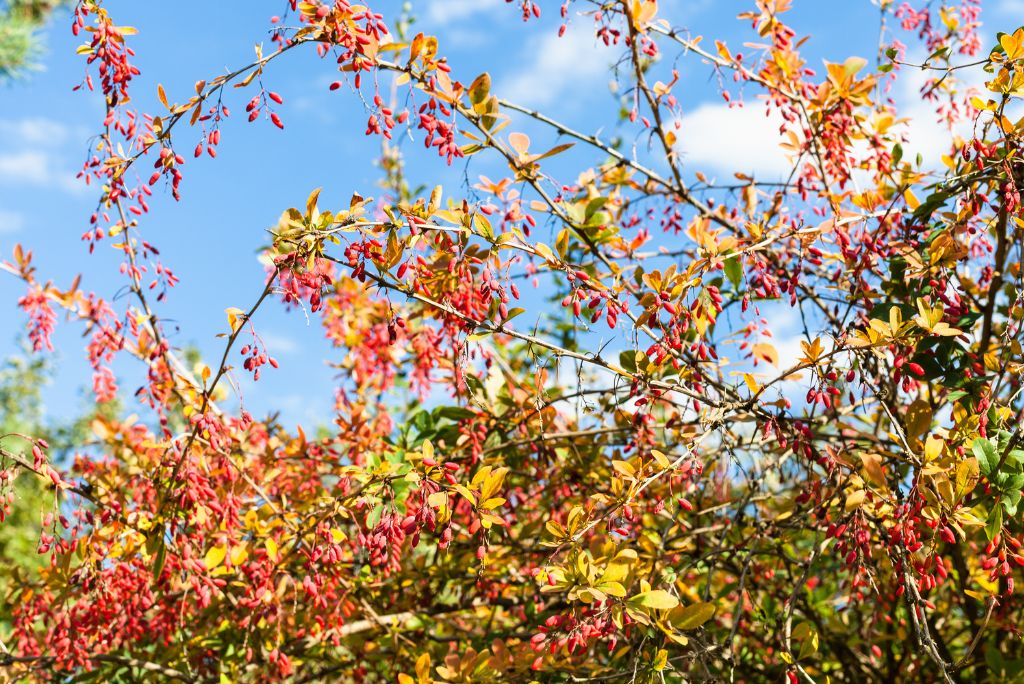
So, why go for drought-tolerant shrubs over lush greenery? Here are a few key benefits.
Water conservation
Shrubs use significantly less water than other types of plants, helping you conserve water. If you live in an area with frequent hosepipe bans or water restrictions, drought-tolerant plants allow you to have a pretty garden without the need for frequent watering.
Reduced maintenance
Xeriscape shrubs are incredibly low maintenance, so you can say goodbye to back-breaking weeding, mowing, and pruning. Most varieties happily grow to their maximum size and then hold their shape, so you can enjoy your new plants with far less garden work.
Stunning landscaping
Shrubs tend to get a bad name, but they look beautiful when planted correctly. They are vibrant colors and beautiful blooms and attract native wildlife. All of this means you get a vibrant landscape without the need for water-intensive flowers that quickly die off after just a few weeks.
Increased home value
If you’ve currently got a dry, dead landscape for a garden or even yellowing grass, you’re hurting your home’s resale value. Potential buyers like to see pretty, thriving gardens on house tours, which is why drought-tolerant plants are such a great idea.
If you’re thinking about selling your house and you want an affordable, easy way to boost its curb appeal, a xeriscape full of sun-loving plants makes a great first impression.
How to Care for Drought-Tolerant Shrubs
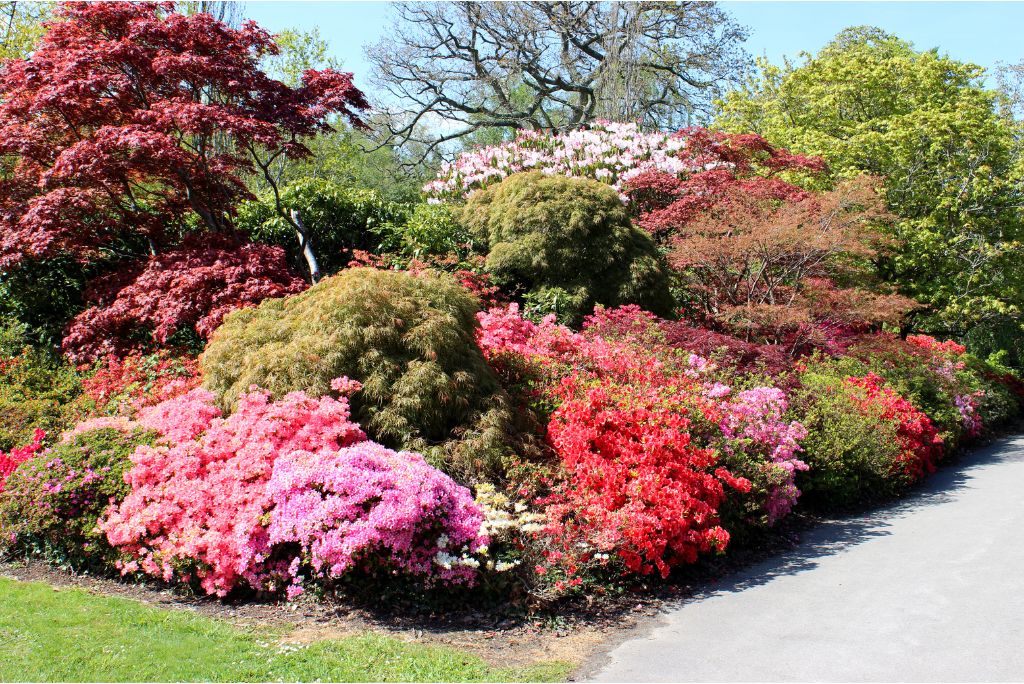
Even low-maintenance shrubs need some care, so here are a few tips to help your new plants thrive.
Watering requirements
Although drought-tolerant plants need significantly less water than other species, they still need regular water while they become established. Once the roots have grown and they’re firmly standing in place, you can reduce watering to just once every few weeks.
Some drought-tolerant plants can even go an entire season without deep watering, so make sure you understand the specific water requirements before planting.
Fertilization
Drought-tolerant shrubs and plants don’t usually need fertilizer to survive. In fact, fertilizer can encourage rapid growth, which means more pruning and weeding for you. Unless you have nutrient-deficient, sandy soil, skip the fertilizer on your new rock garden.
Pruning and trimming
Most drought-tolerant shrubs don’t need pruning or trimming. But if you’d like to keep your new plants smaller and well-shaped, some light pruning once a season can help.
Pruning also helps promote healthy growth in some species that flower, so if you notice a shrub isn’t flowering when it should, it might be time for a trim.
Each shrub has its own pruning requirements, but most do well with light thinning. This encourages new growth within the interior of the plant, reduces its size, and gives it a fuller appearance.
If you’re unsure whether a shrub you like requires any pruning or trimming, ask the experts at your local nursery for advice.
Final Thoughts
As a quick summary, our favorite drought-tolerant shrubs are lavender, beauty bush, Leatherleaf Viburnum, barberry, and burning bush. All of these species do well in drought-prone areas and add some beautiful color to any landscape.
Make sure you understand water, soil, and maintenance requirements before you do any planting, and you’ll soon have a thriving xeriscape that can withstand even the hottest summers.

